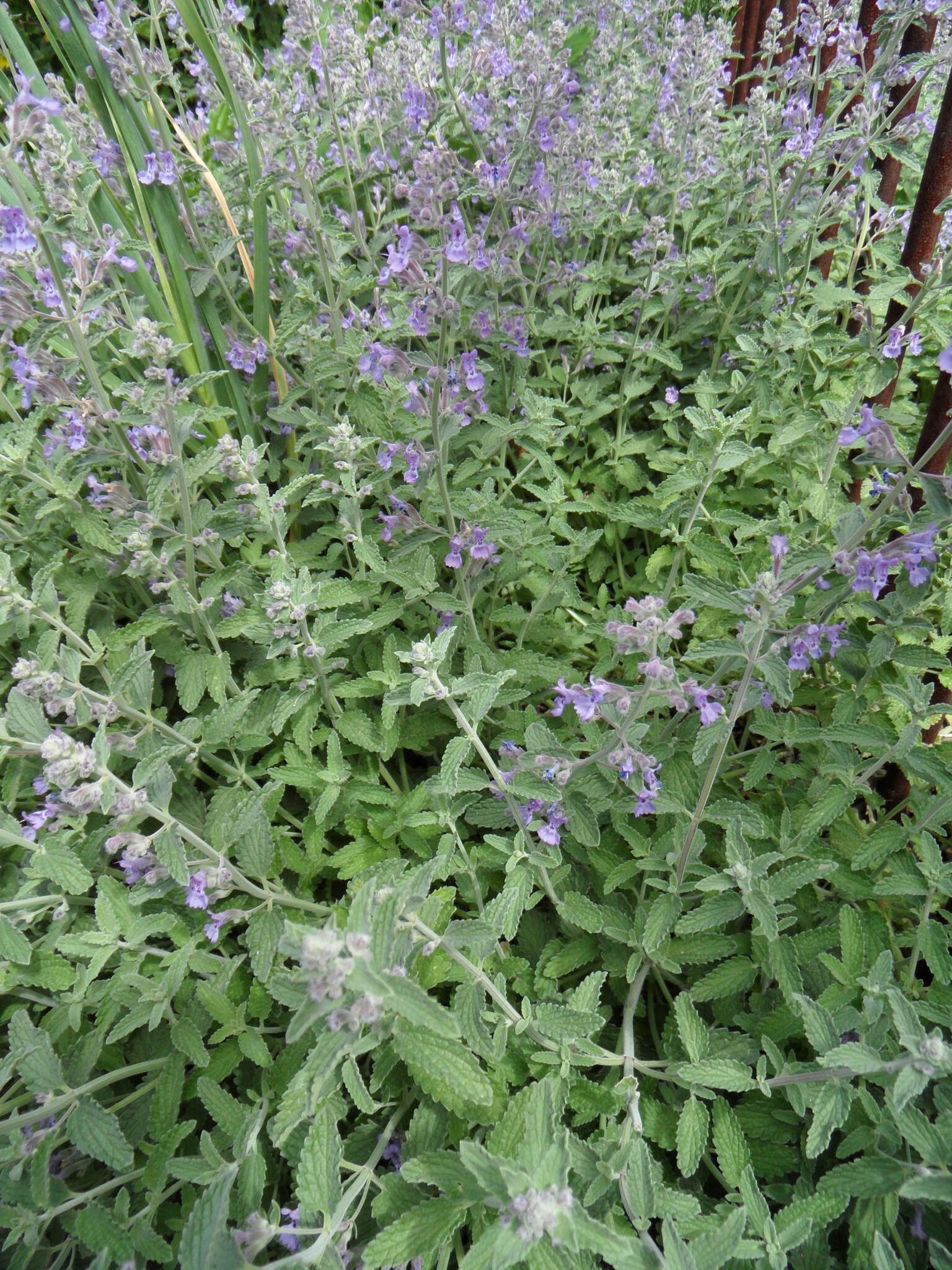
Classical name, possibly referring to the Etrurian city Nepete, now Nepi in Italy.
Perennial or rarely annual, mostly aromatic herbs. Leaves opposite, margins entire to coarsely toothed, rarely lobed, stalked. Flower clusters in crowded or well-separated whorls, occasionally in branched clusters or racemes. Flowers with sepals in a tube having 15 nerves and 5 lobes, the lower ones slightly shorter. Corolla 2-lipped, upper lip of 2 lobes, lower of 3 lobes, the central one spoon-shaped. Stamens 4, fertile, in parallel pairs, lilac or white, anther cells diverging.
Grown as border or edging plants and sometimes as a moderately tall groundcover, mostly for the soft, coloured leaves but also for the lilac flowers.
Cuttings and division, some species by seed.
Some species are said to attract cats, especially N. cataria.
Calyx with 15 nerves; upper pair of stamens longer than the lower pair.
About 250 species from dry habitats of montane tropical Africa, N Africa and Europe.
De Wolf (1955c).
Source: (2002). Lavandula. In: . Horticultural Flora of South-eastern Australia. Volume 4. Flowering plants. Dicotyledons. Part 3. The identification of garden and cultivated plants. University of New South Wales Press.
